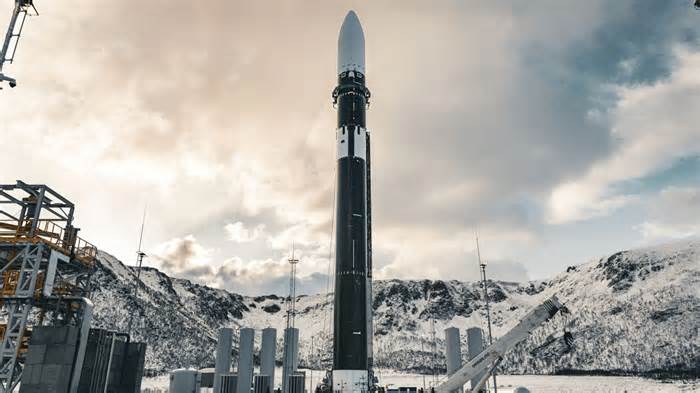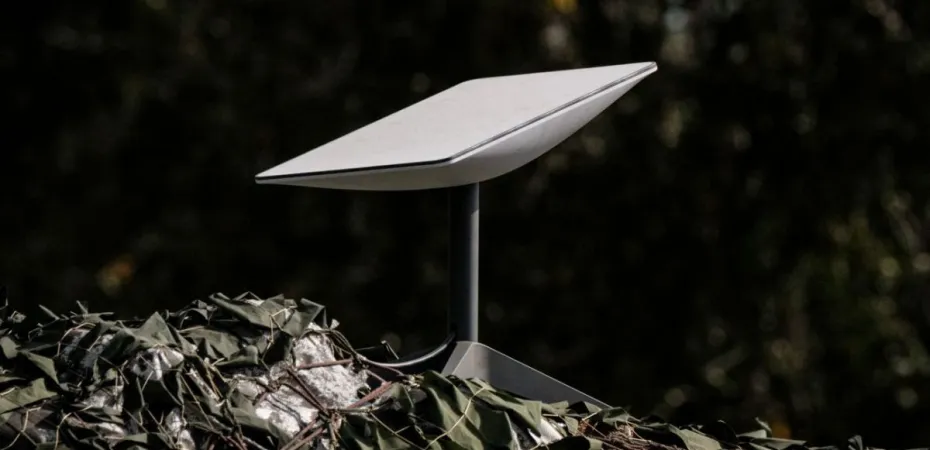Introduction
In a mesmerizing display of modern space technology, SpaceX’s Starlink satellites have been captured in a breathtaking time-lapse, resembling a swarm of “cosmic fireflies” gliding across the night sky. This stunning footage, often shared by astronomers and space enthusiasts, showcases the growing constellation of satellites designed to provide global internet coverage. While controversial among some stargazers, the visual spectacle of these synchronized satellites has undeniably captured the world’s imagination.
What Are Starlink Satellites?
SpaceX, founded by Elon Musk, launched the Starlink project with the ambitious goal of delivering high-speed, low-latency internet to even the most remote corners of the planet. Unlike traditional internet infrastructure, which relies on ground-based cables and cell towers, Starlink operates through a vast network of small satellites orbiting Earth at low altitudes.
Each Starlink satellite weighs around 573 pounds (260 kg) and is equipped with advanced phased-array antennas and ion thrusters for precise orbital adjustments. Since the first launch in 2019, SpaceX has deployed over 5,000 Starlink satellites, with plans to expand the constellation to tens of thousands in the coming years.
The ‘Cosmic Fireflies’ Phenomenon
One of the most striking visual effects of the Starlink constellation occurs shortly after deployment. Freshly launched satellites travel in a closely packed “train” formation before gradually dispersing into their operational orbits. When sunlight reflects off their solar panels, they create a dazzling string of bright dots moving in unison across the twilight sky.
Astrophotographers and skywatchers have documented this phenomenon in stunning time-lapse videos, where the satellites appear like a swarm of glowing fireflies drifting through space. The effect is most visible just after sunset or before sunrise when the satellites are illuminated by the sun while the ground below is in darkness.
Why Do They Glow So Brightly?
-
Sunlight Reflection: The flat, highly reflective surfaces of the satellites’ solar panels act like mirrors, catching and redirecting sunlight toward Earth.
-
Low Orbit: Since Starlink satellites orbit at altitudes between 340 and 1,200 km, they remain visible to the naked eye under the right conditions.
-
Group Deployment: Newly launched satellites stay close together before spreading out, creating a “string of pearls” effect.
Controversy Among Astronomers
While the sight of Starlink satellites is undeniably beautiful, it has sparked significant debate within the astronomical community.
Light Pollution Concerns
-
Disruption of Observations: The bright streaks left by Starlink satellites can interfere with ground-based telescopes, contaminating long-exposure images of distant galaxies and nebulae.
-
Impact on Research: Projects like the Vera C. Rubin Observatory have expressed concerns that mega-constellations could hinder the detection of near-Earth asteroids and deep-space phenomena.
SpaceX’s Mitigation Efforts
In response to criticism, SpaceX has taken steps to reduce the satellites’ visibility:
-
DarkSat: An experimental coating to dim reflections (partially successful but caused overheating issues).
-
VisorSat: Deployable sunshades to block sunlight from hitting the brightest parts of the satellites.
-
Orbital Adjustments: Keeping satellites at higher inclinations to minimize their presence in critical observation zones.
Despite these efforts, some astronomers argue that more stringent regulations are needed to protect the night sky from artificial interference.
How to Spot Starlink Satellites
If you want to witness the “cosmic fireflies” for yourself, here’s how:
Best Viewing Conditions
-
Timing: Look 30-60 minutes after sunset or before sunrise, when the sky is dark but the satellites are still illuminated by the sun.
-
Clear Skies: Minimal cloud cover and low light pollution improve visibility.
-
Tracking Tools: Websites like Heavens-Above and apps like Starlink Tracker provide real-time predictions for satellite passes in your area.
What to Expect
-
“Train” Formation: Newly launched satellites appear as a straight line of 20-60 bright dots moving swiftly across the sky.
-
Gradual Dispersion: Over days and weeks, the satellites spread out and become less noticeable.
The Future of Starlink
SpaceX continues to expand its satellite fleet, with plans to enhance global internet coverage, including for maritime, aviation, and disaster-response applications. The company is also developing Starlink Gen2 satellites, which will be larger and more advanced, potentially increasing brightness concerns.
Meanwhile, competitors like Amazon’s Project Kuiper and OneWeb are launching their own constellations, meaning the night sky may soon host even more artificial “stars.”
Conclusion
The sight of SpaceX’s Starlink satellites moving in harmony like “cosmic fireflies” is a testament to human ingenuity—a blend of cutting-edge engineering and celestial beauty. While their presence raises valid concerns for astronomers, there’s no denying the awe-inspiring spectacle they create.
As we navigate the balance between technological progress and preserving the natural night sky, one thing is certain: the era of mega-constellations has arrived, transforming how we view—and connect with—the cosmos.



